Study Finds Patchy Mobile Coverage on the East Coast Mainline

Network analyst firm Streetwave has surveyed UK mobile coverage (4G, 5G etc.) and mobile broadband speeds along the East Coast Mainline – as operated by the London North Eastern Railway (LNER), which found that passengers can face “hours without mobile coverage access” while travelling between London and Edinburgh. But EE delivered the best service.
The East Coast route is said to connect London and Edinburgh via Yorkshire, York, Durham and Newcastle. According to Network Rail, over 20 million people use the line and its trains each year. But over the course of Streetwave’s 4-hour and 38-minute journey, “significant disparities” were observed between the ‘Essential Coverage’ provided by the mobile operators.
Streetwave defines Essential Coverage as being reflective of locations where the network provides users with connectivity of above 1Mbps download speeds, 0.5Mbps upload, and below 100ms (milliseconds) of latency (i.e. covering or allowing only the most basic of use cases / needs).
Advertisement
Overall, EE delivered the highest levels of Essential Coverage across the line – with 94% of the railway covered. Meanwhile, O2 delivered the lowest levels – with 45% of the railway covered. Vodafone and Three UK delivered 82% and 67% ‘Essential Coverage’ respectively. O2 users were found to have experienced 2 hours and 33 minutes of the train journey without ‘Essential Coverage’, while for an EE user it was just 17 minutes.
Coverage
| Operator | Percentage of ‘Essential Coverage’ Along the Line | Journey Time Spent in Not-Spots |
| 1 – EE | 94% | 17 minutes |
| 2 – Vodafone | 82% | 50 minutes |
| 3 – Three | 67% | 92 minutes |
| 4 – O2 | 45% | 153 minutes |
Mobile Data Speeds
| Operator | Median Download Speeds (Mbps) | Median Upload Speeds (Mbps) |
| 1 – EE | 17.7 | 8.6 |
| 2 – Vodafone | 6.5 | 6.2 |
| 3 – Three | 6.8 | 2.5 |
| 4 – O2 | 3 | 0.7 |
At this point it may be worth reminding readers that LNER and Network Rail currently have a joint project to deploy new 4G and 5G mobile network infrastructure into train tunnels outside London King’s Cross station (here), which we understand is due to be going live before the end of this year.
Advertisement
The results from Streetwave’s study could also help to inform the current debate between mobile operators and the government. This is over whether public money should be diverted from the £1bn industry-led Shared Rural Network (SRN) to subsidise coverage improvements along Britain’s railway lines.
Mark is a professional technology writer, IT consultant and computer engineer from Dorset (England), he also founded ISPreview in 1999 and enjoys analysing the latest telecoms and broadband developments. Find me on X (Twitter), Mastodon, Facebook, BlueSky, Threads.net and Linkedin.
« Vodafone and Three UK Mega Mobile Merger Gets Final Approval UPDATE









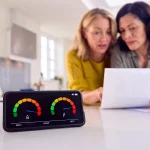
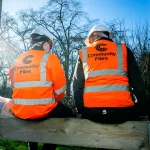
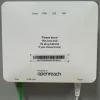
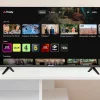

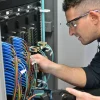
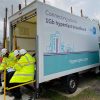







































Well…..there’s a surprise, O2 at the bottom of the charts again!
If it included 3g they would be top.
Another reason why the 3g switch of should have happened later.
My area i now have to use wifi calling because no 5g or 4g for almost every provider only o2 could give good 3g now with that going 0.
@bigbrad
You make it sound like using wi-fi calling is a bad or lesser thing.
Even if we blanketed the entire country with phone masts and cells the notion that everything building should get a decent mobile signal is ridiculous.
Embrace wi-fi and celebrate it, its the most successful wireless technology in history.
I travel on the East Coast Mainline a fair bit, usually do some work on the train too. Seems fairly reflective of my experience that EE is generally, good enough for most of the journey.
Agree, used them all at some point when commuting on that line and EE was always the best. Only used the line for leisure travel recently, but EE was significantly better than VMO2 SIM was. Not saying EE was perfect, there were a number of cells with rubbish data rates, but unlike VM02, others had some bandwidth.
They needed a whole study to discover this? They should have just tried getting the train from London to Edinburgh, it would have very quickly become apparent.
That’s exactly what they did…
I wonder how much Vodafone and Three cover each other’s weaknesses. Will the merger catapult them to the top of the coverage table?
Very doubtful. There will be probably be a decommission on sites (like when Orange and T-mobile merged) so they can save on costs. Which at the time meant rubbish service in a lot of area’s
Oh no, life without a mobile for a couple of hours, might have to read or write a book or actually talk to someone instead of starring at a screen. :-}
Just think if it was a unified mobile network there’d be better coverage.
What is the percentage of geographic cover of the IV poscode area.
This is really interesting, I use the service about once a month between Doncaster and London, I’m on O2 and I have to assume the majority of the coverage blackspot are north of Doncaster as don’t experience such drastic loss of signal. It is also worth noting LNER have pretty reliable free Wifi on board that, whilst not always fast enough to stream (plan ahead people and download the shows you wanna watch en route) is more than fast enough to work / make / receive calls. Also, it’s probably one of the better intercity rail services and the new Hitachi rolling stock is certainly pretty comfortable with at seat service and staff who are actually friendly.
Not sure what planet you’re living on but the free WiFi has always been pretty shocking, then again I’m quite a heavy user.
Always found signal on O2 was pretty decent North of Darlington on the ECML, especially north of Newcastle (could stream Netflix etc. no problem) but south it’s essentially unusable.
On EE now which is much better.
Alas, I’m on this godforsaken planet LOL…
I will caveat that my experiences are mostly on quieter mid-week services with the occasional weekend journey which I’m sure makes a difference. If I’m not working then I’ll usually download a few movies and seasons of stuff ahead of time so I have a choice of things to watch. Also, and I don’t know if it makes any difference but I don’t usually sit in standard class, I’m sure they don’t give extra bandwidth for 1st, that said, maybe they do. I do agree that O2 is the slowest of the networks but other than the spot just outside KGX and a bit between DON and LDS I can’t say I’ve noticed not having a signal. If you want to talk about bad mobile signal and atrocious WiFi; CrossCountry trains take the biscuit there. There is something about the “Voyager” trains they have that seems to about block all mobile signal and as for their WiFi, it’s absolutely useless, even basic browsing is impossible. Someone once told me they used to have mobile repeaters on the trains when they were run by Virgin. TBH, it must be about time those old units were retired, they are so cramped and it seems mad running DMUs like that on what is supposed to be an intercity route, I’d be amazed if they got north of 100mph! Apologies for the wildly off topic reply hahaha.
Can’t really confirm this… My iD/3 connection is usually pretty stable (at least down to London from Leeds).
Never had issues with Three (only going from Leeds down to London). o2 used to be awful, though.
O2 shit tier, quelle surprise.
O2 does seem to have got a lot slower in recent months. I am sure I read somewhere it was to do with the removal of all the Huawei kit, not sure how true that is. Left Three as, at the time, they didn’t do “family” accounts where I could manage mine, my husbands and my mother’s connections all in once place and got a discount for having multiple SIMs on the same account. Not sure I’d go back to Three and EE seem too pricey for me and I never hear good things about Vodafone so I guess it’s better the devil you know at this point. hahaha.